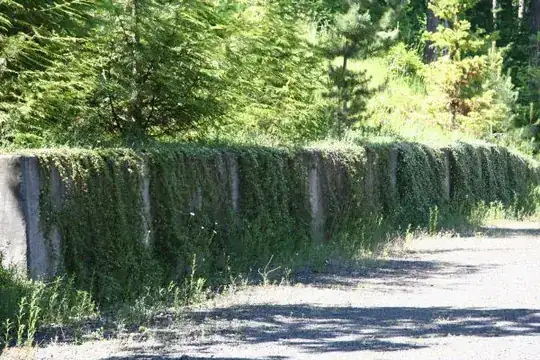I'm in London too, and although this year has been very wet, most years we're dry as dust by August, so water might be an issue in future years.
You haven't said which way the 'fence' faces - if it gets plenty of sun, consider Trachelospermum jasminoides - evergreen, fragrant white flowers in summer. Can be slow to get going, but spreads up to 33 feet once it has. This one's a twiner, and as such, will need a trellis or trellis fence section or three to twine around. Alternatively, wires strained between eyes which are inserted into the concrete for support, but this method usually means you have to do a bit of tying in.
Other than this and the clematis you mention, there are no other hardy flowering evergreen climbers suitable for the UK, unless you're prepared to use a free standing plant which prefers to grow against something, such as Garrya elliptica or Pyracantha. Both will need some training and pruning. Clematis 'Freckles' is supposed to be evergreen, but in my experience, is not a vigorous grower and sometimes does shed its leaves in winter. It will also get 'lost' in the ivy.
The problem you may experience is the arrangement of the 'fence' you have - although self clinging plants such as ivy will happily climb up the vertical concrete and cling well, there'll be nothing for it to cling to inbetween each upright. Other plants, such as the clematis you mention, are not self clinging unless they have a support to cling to, and in the case of clematis, this support usually needs to have thin struts, as in clematis mesh, so that the small petioles can twine around them. Anything thicker and they can't attach themselves. Therefore, depending which plants you choose, it may be necessary to erect another form of support over the existing fence to allow plants to climb or cling properly.
I'd also add that ivy, once it has clothed the area, will need maintenance in the form of cutting back twice a year, usually around May and again September, to keep it flat to the support, at which time any extra root growth or runners at the base heading away from the fence, over the hard surface at the bottom and into the garden should also be removed. The necessity for trimming in later years is much more difficult if you have Clematis armandii growing in and amongst the ivy, obviously - this one should only be cut immediately after flowering. If, on the other hand, you decide not to cut back the ivy, you will very likely not notice the Clematis amongst the unmanaged ivy growth.
Of all the choices available, I'd be inclined to go for pyracantha and train it if the area's fairly sunny, Garrya elliptica if not. That way, you won't need to provide extra supports, but obviously, the choice is yours.
